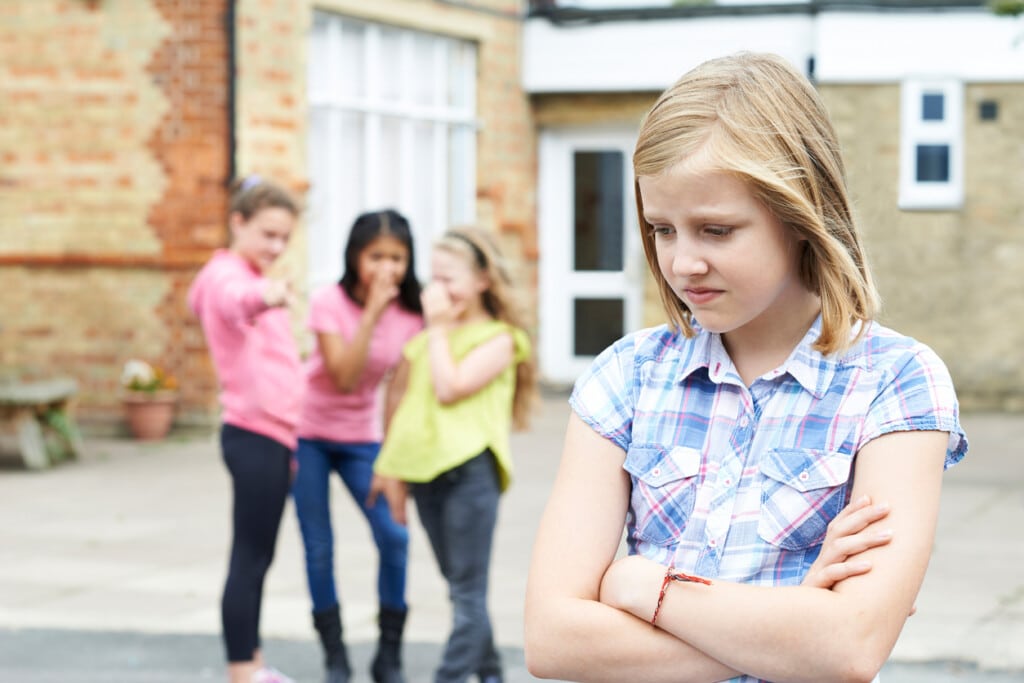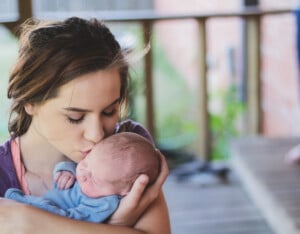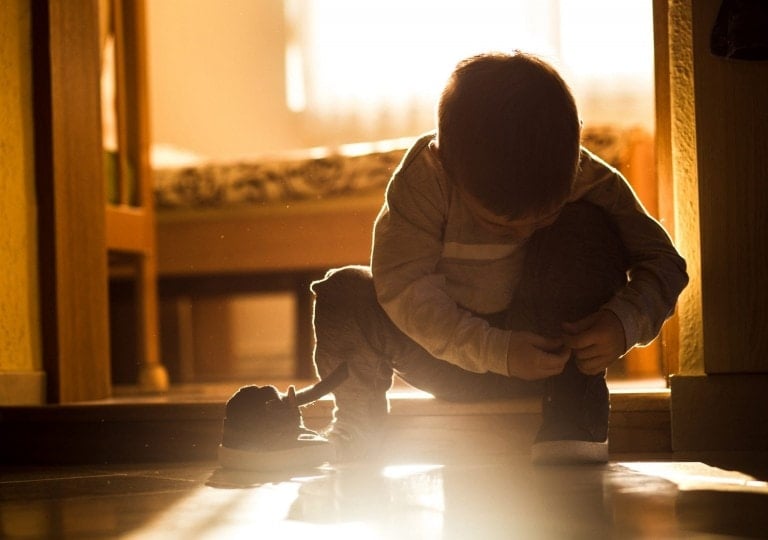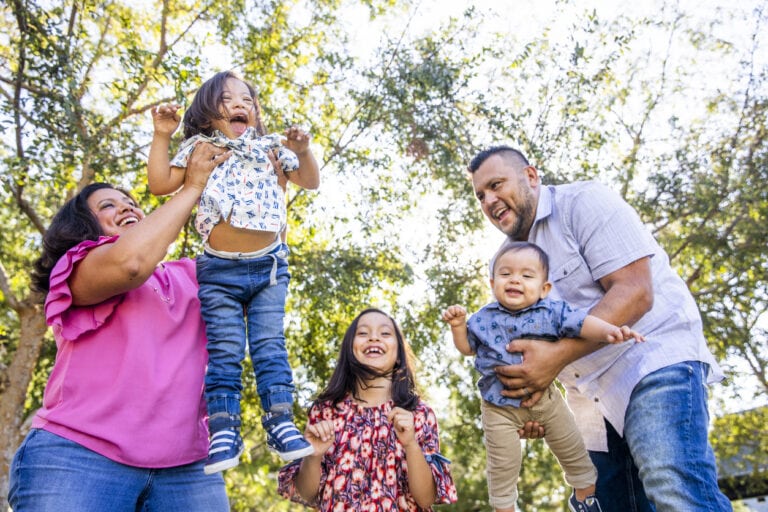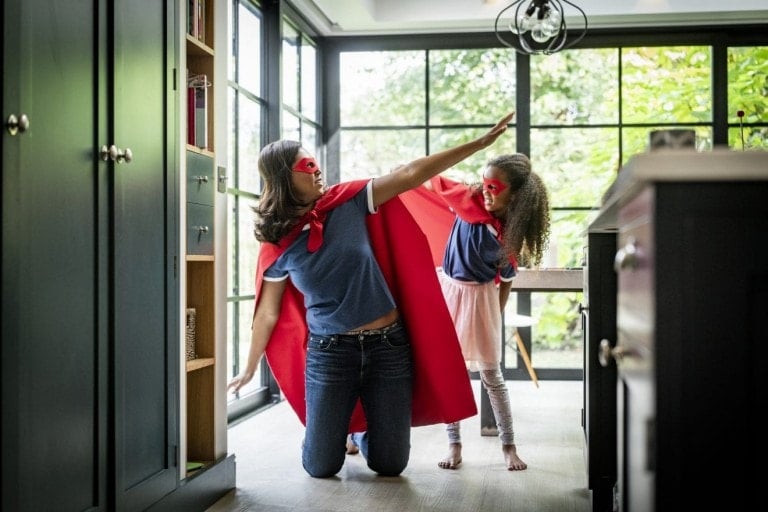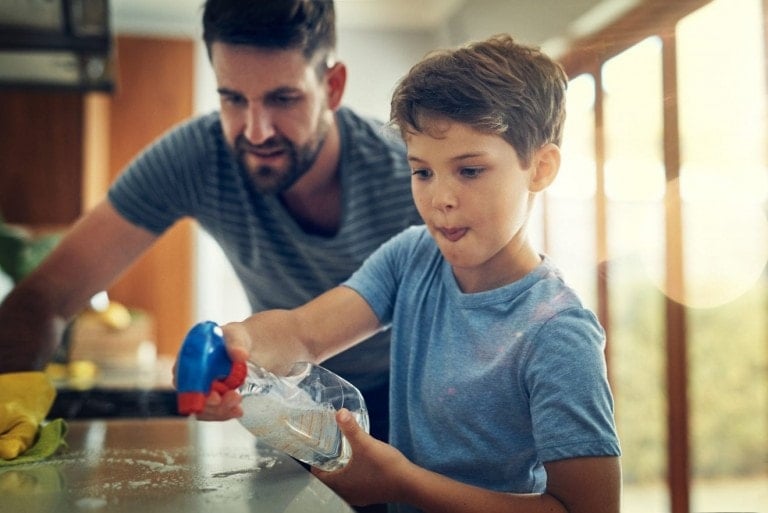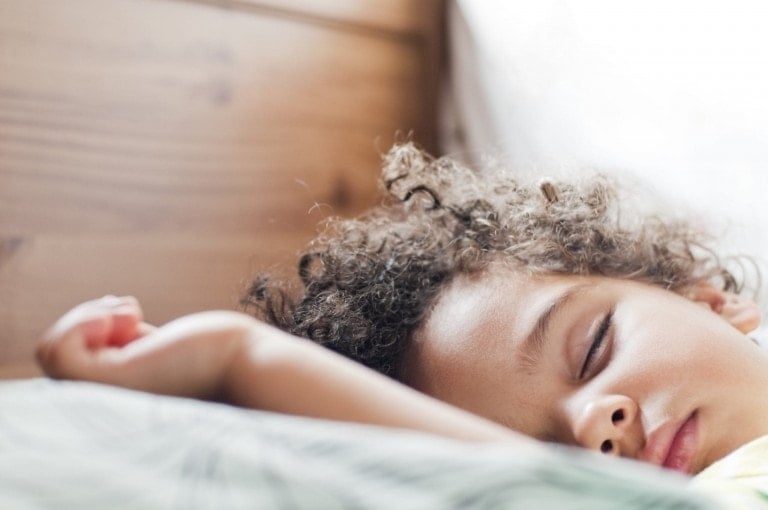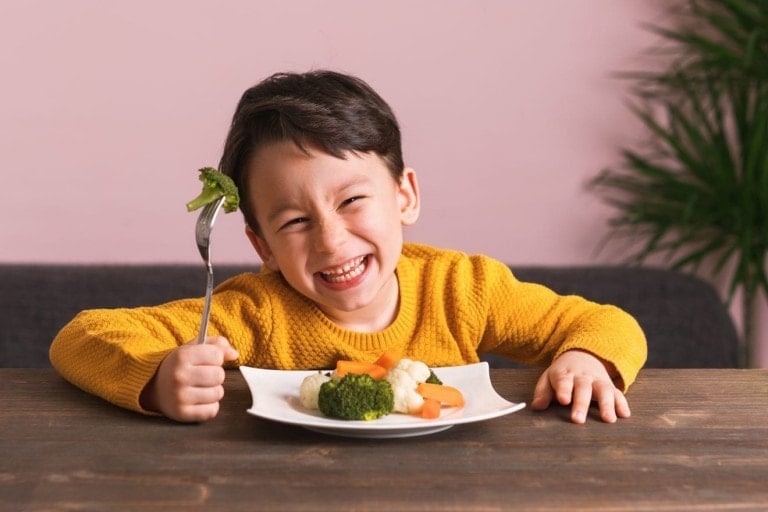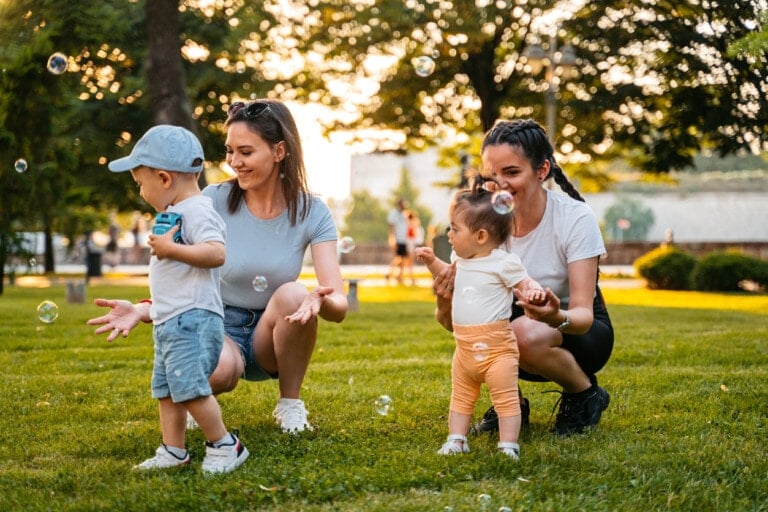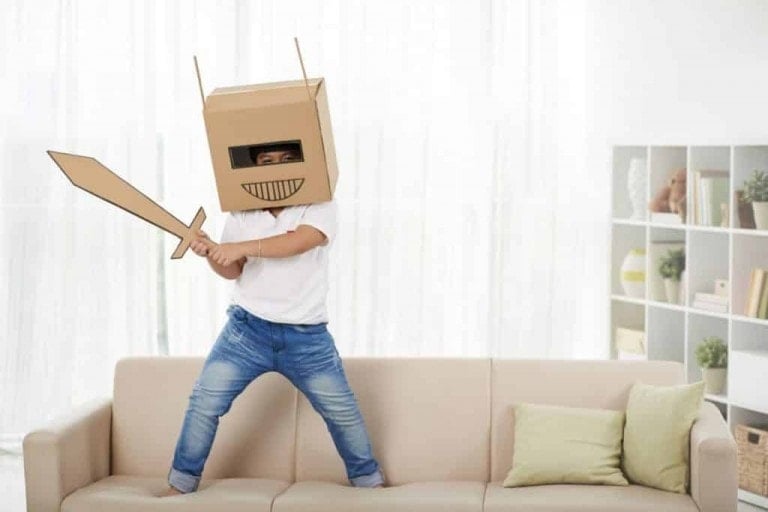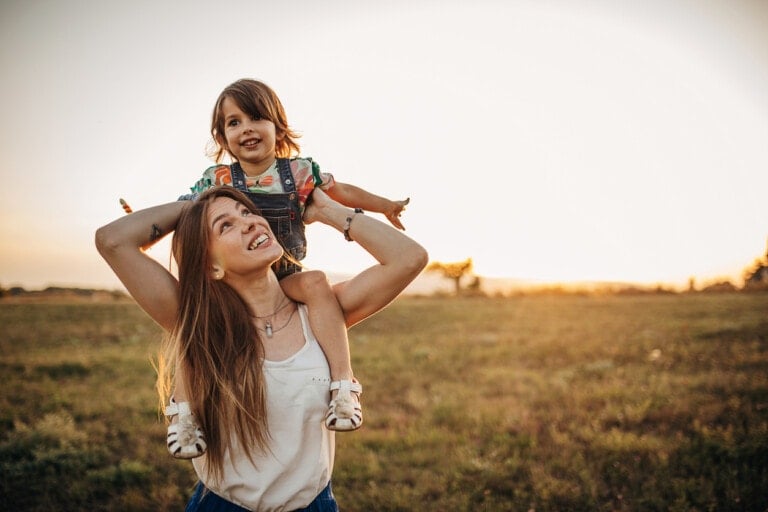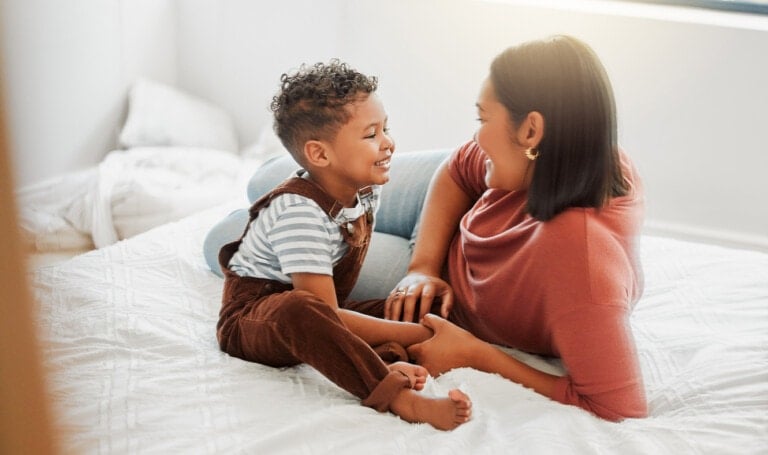When our children start attending school or some other kind of group activity with other kids, it’s normal to notice a change in their behavior. Perhaps they are behaving differently or have adopted a new saying, skill, or interest area. Or maybe their attitude has changed. Your child might be responding to “peer pressure,” which is the influence of other people in their peer group or the pressure to conform to a particular group for acceptance. We often think about peers as being our kids’ friends in school or those of a similar age, but a peer can be any member of a social group who has similar interests, experience, or social status.1
What Is Peer Pressure?
Wanting to belong is a normal part of being human and can affect people regardless of age (yes, we grown-ups can be susceptible to peer pressure, too). Although it can happen to anyone, we often use the term “peer pressure” when discussing children or teenagers. It generally occurs at this time because our children face a big dilemma and stage of development that centers around finding their identity. They want to experience a sense of belonging, so they may be susceptible to changing their behavior, values, or interests.2
Why Kids Give In to Peer Pressure
It’s normal for children to imitate what they see and hear to learn and copy their peers. However, they become even more susceptible to peer pressure as they move into adolescence. This is because they realize other people around them and the interactions they have with these people are important and change how they are perceived.3
Being part of a group (from an evolutionary perspective) keeps us safe because we can rely on other people to help look after us. This drives us to want to belong. So conforming during adolescence is common, particularly for things like appearance, style, values, ideologies, and taste, because they want to show that they belong.3 However, their behaviors can be associated with risk-taking because their behaviors happen when in big groups and depend on the attitudes (or norms) of this group. Wanting to be socially accepted by popular groups may make teens susceptible to peer pressure and engage in behaviors they wouldn’t usually partake in (like risky or negative behavior) because they want to fit in or be seen positively by certain people.4
Examples of Peer Pressure That Kids Experience
This strong desire to fit in or fear of “sticking out,” being left out, or being ostracized can make our kids eager to follow their peers’ lead.1 Peer pressure can be spoken or unspoken. An example of spoken peer pressure is a friend who encourages your child to follow their lead, egg them on, or wants them to engage in a certain type of behavior. Unspoken peer pressure is more about the standard or example that a group sets with their behavior, which sets the tone or expectation for how your child should act to feel like they belong. This is the concept of “everyone is doing it” and subsequently joining in.5
There are two other different types of peer pressure, positive and negative:
Negative Peer Pressure
This type relates to feeling pressure to do something risky or dangerous to themselves or others. Some examples might include:6,7
- Smoking cigarettes, taking drugs, or drinking alcohol
- Skipping school
- Bullying or teasing
- Aggression
- Vandalism or other criminal behavior
- Risky sexual behavior
- Excluding others
- Dressing or behaving in a certain way (positive or negative)
Positive Peer Pressure
Although we often think of peer pressure as being negative, it’s the values the group holds that drive our kid’s behavior. If their peers are prosocial or positive, compassionate or altruistic, our children will also align with these behaviors.8 Some examples of positive peer pressure might include:
- Striving to get better grades to keep up with friends
- Saving money
- Getting an after-school job
- Volunteering
- Including others
- Disapproving of negative behaviors (drinking, vandalism, etc.)
How To Deal With Peer Pressure
Although peer pressure is normal for our children and teens to experience, and they probably cannot avoid it entirely, some strategies can help them learn to spot and cope with it.
Find Examples
Start having conversations about what peer pressure looks and feels like from the time your child is quite young. That way, they will know what to look for and hopefully be more comfortable talking to you about peer or social situations. You might point out scenes in a TV show or book you are reading where the characters exclude or pressure their friends somehow. And to take it a step further, ask them how they think it would feel for the person to be on the outside or be pressured. For older kids, you might talk about viral videos or other social media challenges and some dangers or pitfalls.
Plan Potential Responses
Okay, so we can’t plan for every eventuality, but you might be able to identify a few challenges that either particularly worry you or you might be expecting. This is where you can get your child thinking about managing the pressure. Work with them and consider what they could say or do if they felt pressured to do something they didn’t want to do, like leaving a situation, calling a safe person, or having a certain phrase or excuse they could use to get out of something.
Identify a Safe Grown-up
This grown-up might not be you. But help your child find someone they can talk to if things go wrong and they need help or support. They need someone who can hear what they say without judgment so they can speak honestly. The grown-up can hopefully help them navigate tricky situations.
Be Selective With Friendships
You can’t choose your child’s friends, but you can support particular friendships over others. It’s best not to bad-mouth other children, and some teens can be rebellious, making certain friendships more appealing if you are against them. But try and encourage playdates or catch-ups with friends who are positive role models, or surround them with positive peers. This could be encouraging extracurricular sports, music, or other hobbies, keeping them actively and positively engaged with their community or peers.
Build Their Self-Esteem
Children who feel good about themselves are less susceptible to peer pressure.9 So, ensure your child has a strong sense of self and positive self-esteem. This could mean ensuring they have friends outside of school or a chance to do things they enjoy and are good at (to boost self-esteem). It could also involve helping them develop gratitude or identify their strengths, skills, and achievements.
Being prepared, open, honest, and nonjudgmental in communications with your child is critical for supporting them in coping with peer pressure. It’s essential to give them the tools to manage these kinds of situations because the likelihood is that they will experience peer pressure at some point in their childhood or adolescence. Although peer pressure is typically thought of in a negative light, it’s not always something bad. It’s a normal part of learning how to get along with others in social settings and our daily lives.













